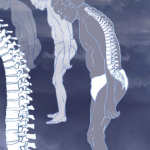 ACR Convergence 2020—Although the Assessment of SpondyloArthritis International Society has developed criteria for positive magnetic resonance imaging (MRI) in the classification of axial spondyloarthritis (axSpA), the criteria have high sensitivity with relatively low specificity, and experts convened at ACR Convergence 2020 to discuss the controversies surrounding the diagnostic evaluation of axSpA.1
ACR Convergence 2020—Although the Assessment of SpondyloArthritis International Society has developed criteria for positive magnetic resonance imaging (MRI) in the classification of axial spondyloarthritis (axSpA), the criteria have high sensitivity with relatively low specificity, and experts convened at ACR Convergence 2020 to discuss the controversies surrounding the diagnostic evaluation of axSpA.1
Xenofon Baraliakos, MD, PhD, an associate professor of internal medicine and rheumatology at Ruhr University, Bochum, Germany, gave the first presentation on advanced imaging in the evaluation of chronic back pain in the context of SpA. MRI can be used to detect a fat signal on the spine of patients with ankylosing spondylitis, but interpreting the images is complicated by the fact these lesions are present even in the general public, he said. In fact, inflammatory and fatty spinal/inflammatory sacroiliac joints, and spinal MRI lesions suggestive of axSpA, are found with relatively high frequency in the general public. Moreover, these MRI changes occur more frequently in older individuals, indicating mechanical factors may contribute to their development.
Dr. Baraliakos advised the audience to not deny an MRI to patients with unclear symptoms. “If symptoms are new, we have to clarify what is going on,” he said.
Although the severity of bone marrow edema is associated with the speed of radiographic progression of SpA, Dr. Baraliakos explained, whether the osteoblastic activity captured by positron emission tomography (PET) in ankylosing spondylitis is related only to inflammation remains unclear.
There does appear, however, to be a relationship between inflammation and fatty lesions on the occurrence of new syndesmophytes such that there is “no risk” of new syndesmophytes in patients lacking fatty lesions, he said, but a greater than threefold increased risk if fatty lesions are present. Dr. Baraliakos cautioned, however, against assuming that a positive MRI is proof of axSpA, especially in individuals who lack clear clinical symptoms indicative of disease.
Case Reports
Lianne Gensler, MD, a rheumatologist at University of California, San Francisco, then talked through two cases, the first of which was a 22-year-old man with right-side low back pain. His pain occurred suddenly after playing basketball. Although the pain initially worsened, it eventually improved over the course of weeks—only to return when the patient began to work out again. Not only did the patient not have classic inflammatory back pain, but a radiograph of his pelvis revealed only mild sclerosis, a nonspecific finding.
Dr. Gensler opted to perform an MRI of the patient’s sacrum and pelvis (with no gadolinium). Although the presence of bone marrow edema alone is not specific for axSpA, its location, intensity, number of affected slices and structural changes of fat and erosions affect the probability of an axSpA diagnosis.


